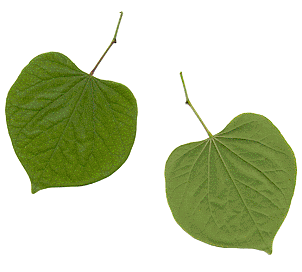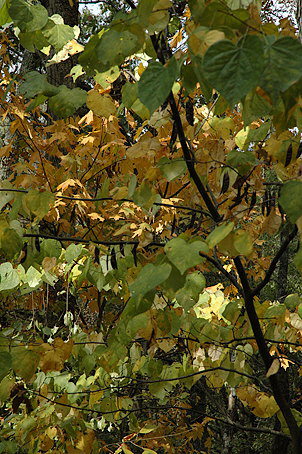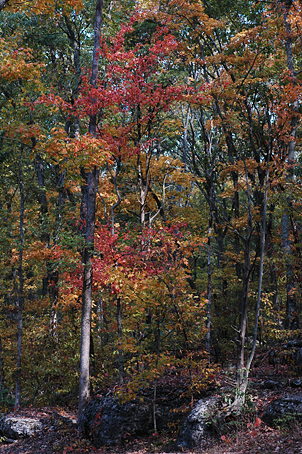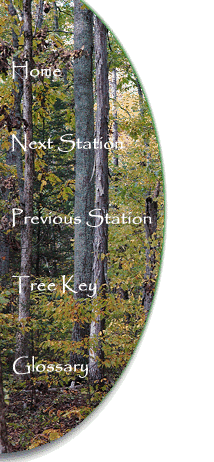| |
|
| |
 |
| |
Eastern Redbud Leaf |
Identification:
The leaves of the Eastern Redbud vary from greenish-yellow to yellow
in the fall. The leaves are 3 inches to 5 inches in
length, and are simple,
alternate,
entire, smooth and heart-shaped.
Note the palmate venation in the leaves. The
petiole is swollen at both ends. As the leaves fall, note
the alternate branching on this tree.
| |
|
 |
|
|
Eastern Redbud Bark |
The bark of the Eastern Redbud is
gray-brown, thin and smooth in young trees, and becomes fissured and
scaly on old trees. On large trunks you may be able to see the
orange inner bark.
The twigs of the Eastern Redbud are
dark reddish purple to dark brown, smooth and shiny with dark
lenticels.
| |
|
| |
 |
| |
Eastern Redbud Fruit in the Fall |
In the fall the
fruit pods of the
Eastern Redbud still hang from many branches. Each
pod is 2
inches to 3 inches long. The pods will have darkened to a deep
brown or black by the fall. The seeds are often eaten by
birds.
Other Uses
and Lore:
The wood is heavy,
hard and close-grained. Because of its small size, the wood is
not used commercially.
The Trail From
Station Five to Station Six
 |
| Fall Foliage
with Limestone Outcroppings |
From Station
Five, the trail has a few gentle climbs and descents. Some of
the best limestone outcroppings are in this section. These
outcroppings create shelter for many creatures. Small mammals,
amphibians and reptiles all take shelter from the cooler
temperatures in the small fissures and cracks you see in the
outcroppings. These fissures also retain moisture
during dry periods. Many species of ferns and mosses occur
along this section as well. Look for Resurrection Fern and
Purple Stemmed Cliff-brake on the sides of the outcrops. There
is a large Bur Oak that overhangs the trail in this section, and you
can sometimes find the distinctive large acorns of this tree in the
fall. Look for Station Six on the left side of the trail.
|

